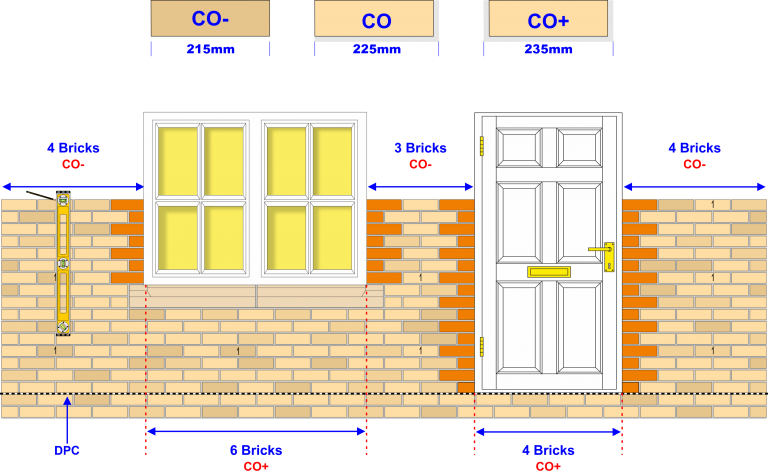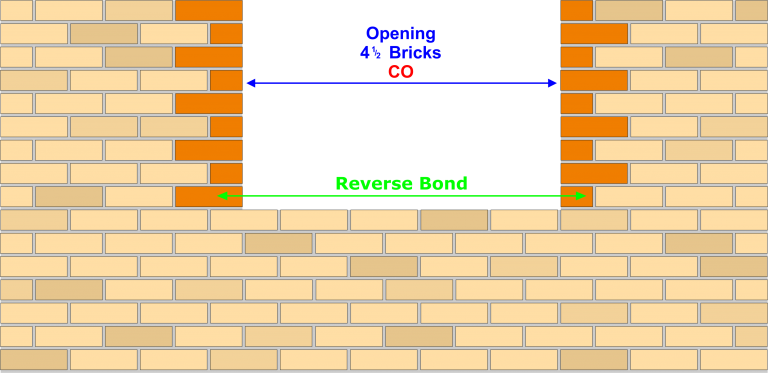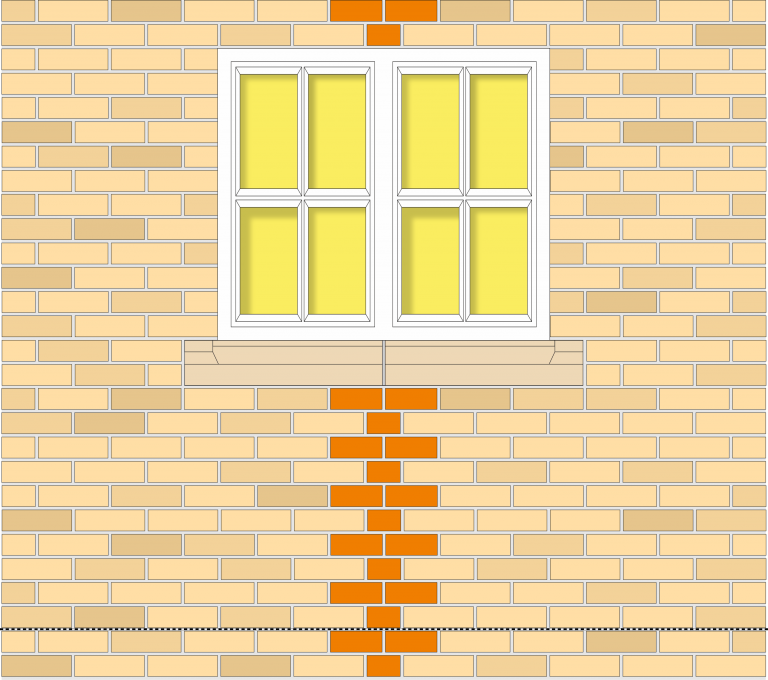
Teaching and learning resources for the construction industry with NVQ and Diploma Assessment Criteria
Unit 206 Construct cavity walling forming masonry structures
The aim of this unit is to provide the learner with the
knowledge and skills to construct walling to form masonry structures
The learner will:
When setting out a building is good practice to place a course of bricks to gauge along the length of the wall in Dry Bond which is laying bricks without mortar on the bed and perp joints to the co-ordinating size of 225mm which is the working size of a brick with perp joint.
Generally, architects will design Buildings with the aid of a brick dimension table to minimise cuts during construction
Therefore, there are three different combinations when setting out or measuring bricks and mortar as follows;
CO+ Brick + 2x10mm mortar joints
CO Brick + 1x10mm mortar joint
CO- Brick dimension only.
Time is saved on the wasteful cutting of bricks can be avoided and the overall appearance of the face brickwork appearance will be enhanced.

Dry Bond
During the dry bonding process, you must take all the relevant dimensions from the working drawings for windows, doors or any openings to ensure they conform to the architects coordinate sizes.
The reveals are shown in dark orange bricks in the above diagram you will notice the bond on either side of the reveals is symmetrically on each course of brickwork.
Perps are vertical joints between each brick which must be plum through the height of the wall, using a pencil mark on the face of the brick every fourth or fifth course will help you to keep to vertical perp joints plumb.

Bond Size
Bond Size means the length of the wall or pier has no cut bricks in the brick courses, for example, each course has a stretcher at each end or a header.
If you need to insert a broken bond into your brick courses ideally needs to be in the middle of the wall or pier, in some situations this may not be possible bricklayers must use their discretion on placing broken bond so the overall effect is not lost in bond and arrangement.

Alternative Broken Bond at Each End of the Wall

Centrally located Broken Bond

Reverse Bond
The above example of stretcher bond wall works to half a brick length, in this situation you can place stretcher at one end and half-brick at the opposite end which is repeated every alternate course.
Instead of slightly and evenly adjusting the cross joints to avoid broken bond, it may be possible to use reverse bond to avoid any broken bond that occurs.
Reverse bond allows bricks in reveals either side of openings or at the end of walls to be asymmetrical.

Reverse Bond at Window Reveals
If the door/window openings are not brick sizes then certain adjustments have to be made, and this normally means inserting ‘broken bond’.
Reveal bricks provide fixed points between which the bonding is set out.
The short lengths of brickwork between windows offer little scope for adjusting the widths of the cross joints in order to avoid broken bond.
Broken bond can sometimes be avoided by tightening or spreading the joints.

Broken Bond at Window Reveals